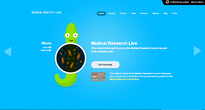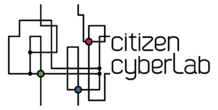Worm Watch Lab
Cs Portal > List of citizen science projects > Worm Watch Lab - (2013/11/15)
IDENTIFICATION
- Beta start date : N/A
- End date : Still open.
- Medical and health sciences > biology, genetics, medicine, neuroscience (biology/medicine/neuroscience)
- Others in the same subject areas: Cell Slider
- Others projects about biology/medicine/neuroscience: Cell Slider, Eterna, EyeWire, Fold It
⇳ Description We need the public’s help in observing the behaviour of tiny nematode worms. When you classify on wormwatchlab.org you’re shown a video of a worm wriggling around. The aim of the game is to watch and wait for the worm to lay eggs, and to hit the ‘z’ key when they do. ➠ Purpose By watching these worms lay eggs, you’re helping to collect valuable data about genetics that will assist medical research by helping us understand how the brain works and how genes affect behaviour. ? Research question The idea is that if a gene is involved in a visible behaviour, then mutations that break that gene might lead to detectable behavioural changes. The type of change gives us a hint about what the affected gene might be doing. Although it is small and has far fewer cells than we do, C. elegans has almost as many genes and because we share a common ancestor even with worms, many of them are closely related to human genes. This presents us with the opportunity to study the function of genes that are important for human brain function in an animal that is easier to handle, great for microscopy and genetics, and has a generation time of only a few days.
TEAM
MRC Laboratory of Molecular Biology, Cambridge, UK
Project team page http://www.wormwatchlab.org/#/team Leader: Institution: MRC Laboratory of Molecular Biology, Cambridge Partner institutions: Medical Research Council (MRC) as part of the Medical Research Council Centenary year programme, Medical Research Foundation Contact: team@zooniverse.org
USER TASKS
CONTRIBUTION TYPE: data analysis
PARTICIPATION TYPOLOGY:
GAMING GENRE NONE
GAMING ELEMENTS: NONE
◉ Tasks description When you classify on wormwatchlab.org you’re shown a video of a worm wriggling around. The aim of the game is to watch and wait for the worm to lay eggs, and to hit the ‘z’ key when they do. ⤯ Interaction with objects
▣ Interface
- Data type to manipulate: other
- interface enjoyment:
- Interface usability: easy to use
GUIDANCE
- Tutorial: Somewhat
- Peer to peer guidance: Somewhat
- Training sequence: Somewhat
- Individual performance: Somewhat
- Collective performance: Somewhat
- Research progress: Somewhat
❂ Feedback and guidance description
COMMUNITY
- Main news site: http://blog.wormwatchlab.org/
- Frequency of project news updates: less than weekly
- Type of events:
- Frequency of events :
⏣ Community description
- Community size (volounteers based)
- Role:
- Interaction form:
- Has official community manager(s): N/A
- Has team work N/A
- Other:
- Community led additions:
Other information
PROJECT
Url:http://www.wormwatchlab.org/
Start date: 2013/06/30
End date: Still open
Infrastructure: Zooniverse
TEAM
Official team page:http://www.wormwatchlab.org/#/team
Leader:
Institution: MRC Laboratory of Molecular Biology, Cambridge
Partner institutions: Medical Research Council (MRC) as part of the Medical Research Council Centenary year programme, Medical Research Foundation
Contact: team@zooniverse.org
Main location: MRC Laboratory of Molecular Biology, Cambridge, UK
PROJECT DEFINITION
Subject
Medical and health sciences > biology, genetics, medicine, neuroscience (biology/medicine/neuroscience)
Description
We need the public’s help in observing the behaviour of tiny nematode worms. When you classify on wormwatchlab.org you’re shown a video of a worm wriggling around. The aim of the game is to watch and wait for the worm to lay eggs, and to hit the ‘z’ key when they do.
Purpose.
By watching these worms lay eggs, you’re helping to collect valuable data about genetics that will assist medical research by helping us understand how the brain works and how genes affect behaviour.
Research question.
The idea is that if a gene is involved in a visible behaviour, then mutations that break that gene might lead to detectable behavioural changes. The type of change gives us a hint about what the affected gene might be doing. Although it is small and has far fewer cells than we do, C. elegans has almost as many genes and because we share a common ancestor even with worms, many of them are closely related to human genes. This presents us with the opportunity to study the function of genes that are important for human brain function in an animal that is easier to handle, great for microscopy and genetics, and has a generation time of only a few days.
ABOUT PARTICIPANT TASKS
Tasks description.
When you classify on wormwatchlab.org you’re shown a video of a worm wriggling around. The aim of the game is to watch and wait for the worm to lay eggs, and to hit the ‘z’ key when they do.
.
| Grey typology | Participation typology | Contribution type: | ||||||||||||||||||||||||||||
|---|---|---|---|---|---|---|---|---|---|---|---|---|---|---|---|---|---|---|---|---|---|---|---|---|---|---|---|---|---|---|
|
|
|
||||||||||||||||||||||||||||
| Gaming | ||||||||||||||||||||||||||||||
| Genre: | Gaming elements: | |||||||||||||||||||||||||||||
| Interface | ||||||||||||||||||||||||||||||
| Data type to manipulate: other | interface enjoyment: Interface usability: easy to use |
Member profiles::N/A Member profile elements: |
||||||||||||||||||||||||||||
ABOUT GUIDANCE AND FEEDBACK
| Guidance | Feedback on | ||||||||||||
|---|---|---|---|---|---|---|---|---|---|---|---|---|---|
|
|
.
COMMUNITY
| Tools | News & Events |
|---|---|
|
Communication: website, blog, other |
Main news site: http://blog.wormwatchlab.org/ |
| Community description | |
|
Community size (volounteers based): |
|
Other information about community:
Community led additions:
OTHER PROJECT INFORMATION
Screen Shot 2013-11-15 at 11.51.05.png Yes [[has completion level::Medium]
http://www.wormwatchlab.org/#/team
MRC Laboratory of Molecular Biology, Cambridge, UK team@zooniverse.org
Yes biology, genetics, medicine, neuroscience Medical and health sciences biology/medicine/neuroscience By watching these worms lay eggs, you’re helping to collect valuable data about genetics that will assist medical research by helping us understand how the brain works and how genes affect behaviour. The idea is that if a gene is involved in a visible behaviour, then mutations that break that gene might lead to detectable behavioural changes. The type of change gives us a hint about what the affected gene might be doing. Although it is small and has far fewer cells than we do, C. elegans has almost as many genes and because we share a common ancestor even with worms, many of them are closely related to human genes. This presents us with the opportunity to study the function of genes that are important for human brain function in an animal that is easier to handle, great for microscopy and genetics, and has a generation time of only a few days. MRC Laboratory of Molecular Biology, Cambridge, UK Worm Watch Lab When you classify on wormwatchlab.org you’re shown a video of a worm wriggling around. The aim of the game is to watch and wait for the worm to lay eggs, and to hit the ‘z’ key when they do. data analysis
other, other: videos
Thinking: no
Computing: no
Sensing: no
Gaming: no
easy to use
N/A
N/A
N/A
N/A
N/A
N/A
N/A
N/A website, blog, other Twitter, Facebook
less than weekly
N/A
Medium
Bibliography
| BIBLIOGRAPHY |



